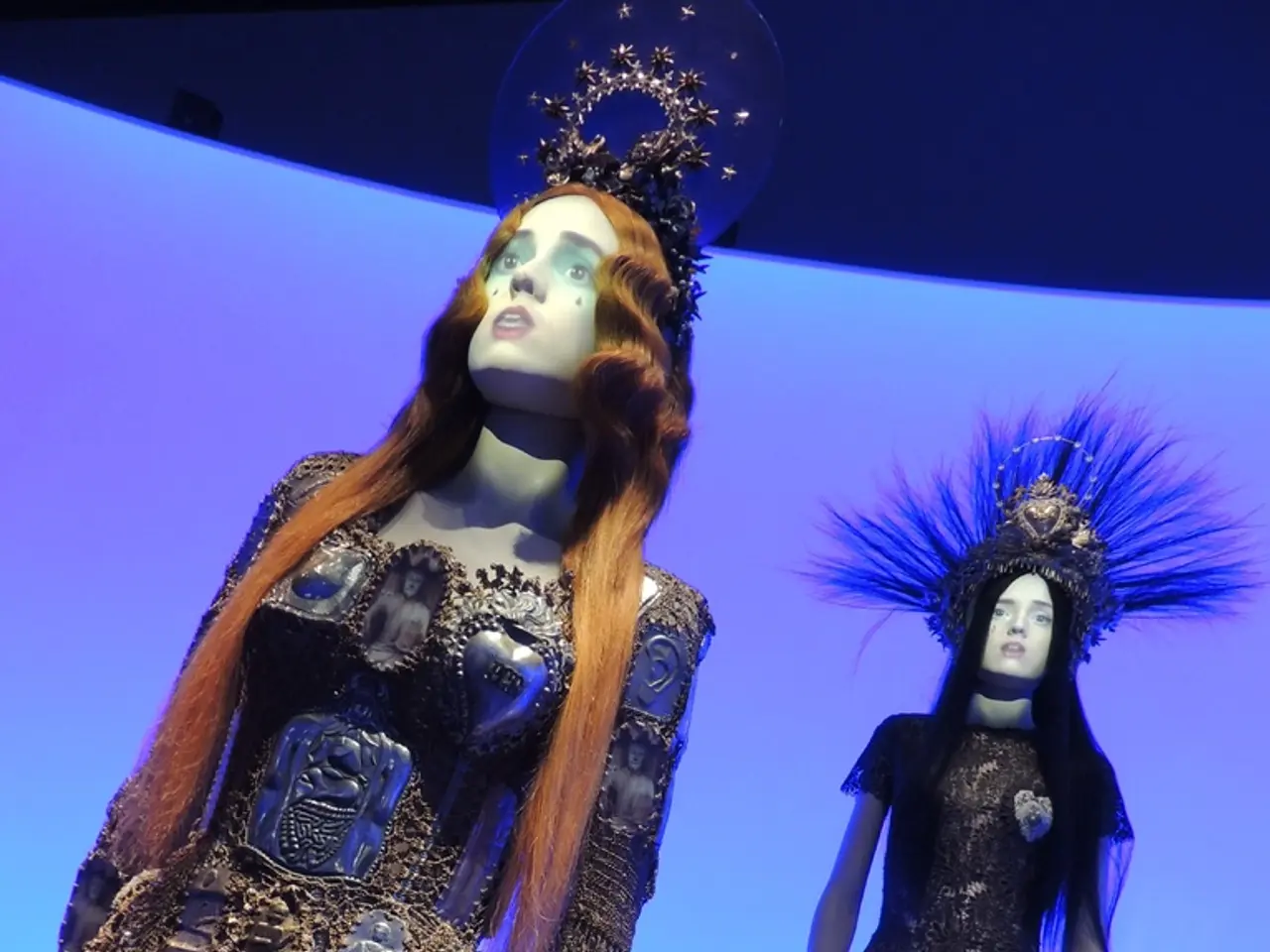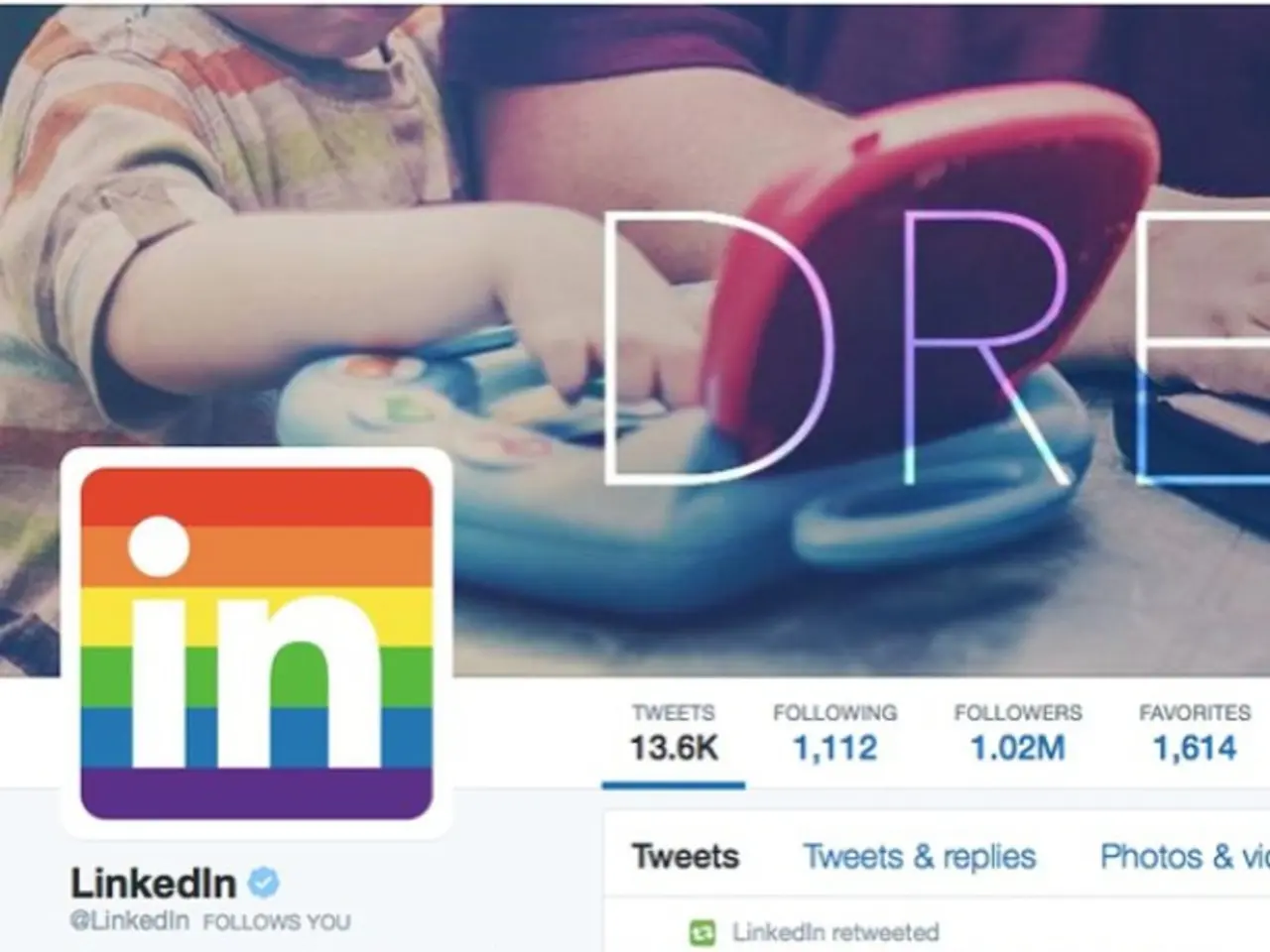In the modern digital era, maintaining the worth of high-end fashion remains a noteworthy challenge
The world of luxury fashion is undergoing a significant transformation, moving towards a seamless integration of physical and digital experiences, often referred to as the phygital realm. This shift is not without challenges, particularly maintaining the sense of luxury in a virtual space. However, efforts like those of the LVMH Prize and Feels Like are addressing this issue head-on.
By leveraging technology, luxury fashion brands can expand their reach while maintaining their premium positioning. This democratisation of fashion worldwide ensures that luxury experiences are accessible to a broader audience, without compromising on exclusivity and craftsmanship.
To preserve their exclusivity and stay relevant in a digital-first marketplace, luxury brands prioritise bespoke experiences that seamlessly blend the physical and virtual worlds. The success of the LVMH Prize digital showrooms demonstrates that when done right, virtual experiences can enhance, rather than dilute, a brand's luxury value.
Virtual experiences such as augmented reality, virtual try-ons, and interactive digital showrooms can offer tailored experiences to consumers, making every customer feel special. These technologies, when used strategically, can replicate the in-store experience digitally and reduce purchase hesitation. For instance, Dior employs sophisticated AR and VTO technologies to allow customers to visualize products realistically online.
Luxury brands also leverage social networks to engage consumers with narratives highlighting craftsmanship, innovation, and lifestyle. Brands like Loewe create surreal, artistic content that fosters mood and brand equity, while others like Marc Jacobs tap into internet culture by collaborating with niche micro-influencers.
Innovative collaborations and partnerships with tech companies, artists, and eco-conscious partners also play a crucial role in enhancing exclusivity while demonstrating innovation and sustainability. These partnerships allow luxury brands to offer personalized, high-end digital experiences that justify premium pricing and attract discerning consumers seeking both uniqueness and modern values.
Some brands host virtual fashion shows and digital showrooms, blending luxury aesthetics with digital innovation, to reinforce exclusivity while widening global reach. The LVMH Prize, an annual competition celebrating emerging designers, has been a prime example of the phygital shift in luxury fashion.
Christian Lowell, Creative Director at Feels Like, a studio that develops human-centered digital interfaces for luxury brands, believes that the future of luxury fashion lies in the phygital realm. Efforts by Dolce & Gabbana, LVMH, and Carolina Herrera showcase a shift in experiential marketing towards blending physical and virtual worlds.
In summary, luxury fashion brands are carefully crafting immersive digital experiences by marrying cutting-edge technology with artistic storytelling and strategic digital placement. This ensures that their aura of exclusivity is maintained while audience engagement is expanded and premium pricing is sustained. Global audiences can now explore the collections of emerging designers in a way that feels intimate and exclusive through digital innovations.
- Luxury fashion brands are increasingly integrating technology into their advertising strategies to extend their reach while preserving their premium image.
- To maintain exclusivity and cater to a broader audience in the digital-first market, luxury brands are focusing on crafting bespoke,phygital (physical and digital) experiences that blend seamlessly.
- The use of virtual experiences like augmented reality, virtual try-ons, and digital showrooms helps luxury brands create personalized, tailored experiences, replicating the in-store experience digitally.
- Luxury fashion brands are collaborating with tech companies, artists, and eco-conscious partners to offer exclusive, high-end digital experiences that reinforce exclusivity, justify premium pricing, and appeal to consumers seeking uniqueness and modern values.




